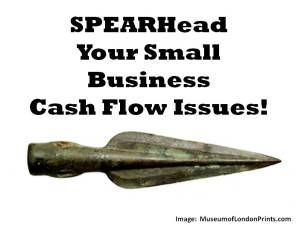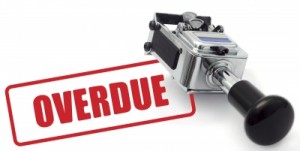Small Business Cash Flow – The Ultimate Guide
Small Business Cash Flow – what is it?
Cash flow is the sum of all the cash received into your business, less all the cash payments being made from your business. Positive cash flow is when there is more cash coming into the business than is being paid out of it. Negative cash flow is when there is more cash being paid out of the business than is being received by the business.
Small Business Cash flow issues arise in a small business for two major reasons:
- The small business doesn’t have enough revenue (gross income) coming into the business compared to its expenses, and/or
- The small business doesn’t have good internal financial management and administration procedures in place to support the business. This could mean the business has difficulty collecting its accounts receivables; it has too much cash tied up in stock; and/or it is spending too much money on business overheads/expenses/assets.
Many small businesses mostly focus on gross income and profit – before or after tax. While both are important in business, cash flow is the life blood of all businesses, and without it they eventually die.
Yet, very few small business entrepreneurs spend much time thinking about cash flow or understand how critical a business driver it is. The key transactions in business that affect cash flow are:
- Sales (cash and credit).
- Purchases (inventory and business expenses).
- Business loans (new and repayments).
- Business assets (buying and selling them).
- Investments
The key principles of good cash flow management are simple. Firstly, the small business needs to ensure it has more income coming into the business than expenses; and the business needs to have its accounts receivable paid on time so it can pay its own creditors.
I have developed the SPEARHead System™ – 50 Strategies for Supercharged Small Business Cash Flow to support entrepreneurs to manage their cash flow. For the FREE E-book, please click here www.adelemclay.com/free-resources
What does SPEARHead System™ mean?
The SPEARHead System™ covers all aspects of small business cash flow as follows:
S – Sales Receivables
P – Payables and Purchases
E – Expense Management
A – Asset Acquisition
R – Residual Cash
Head – how do you ‘Head off’ or ‘SPEARHead’ your competitors to ensure your business never loses a customer and attracts all the customers to it that you are seeking?
For my FREE E-book entitled: SPEARHead System™ – 50 Strategies for Supercharged Small Business Cash Flow please click here http://www.adelemclay.com/free-resources/#spearheadsystem
Let small business cash flow issues be a thing of the past for you and your business.
Could some guidance from me be helpful to you? If so, please arrange a free 30 mins Skype strategy meeting with me. Here’s my calendar to book a meeting. I’d love to support you in some way to gain ‘seductive clarity’ in any aspect of your business or life.
Other articles on Small Business Cash Flow :
Cash Flow Problems in YOUR Small Business
Small Business Problems – Why are YOU in Business
Small Business Cash Flow Problems
Cash Flow in Business
Cash Flow Projections – Important in Business?
Projected Cash Flow – Relevant in Business?
How to Solve Cash Flow Problems: Inventory Turn






